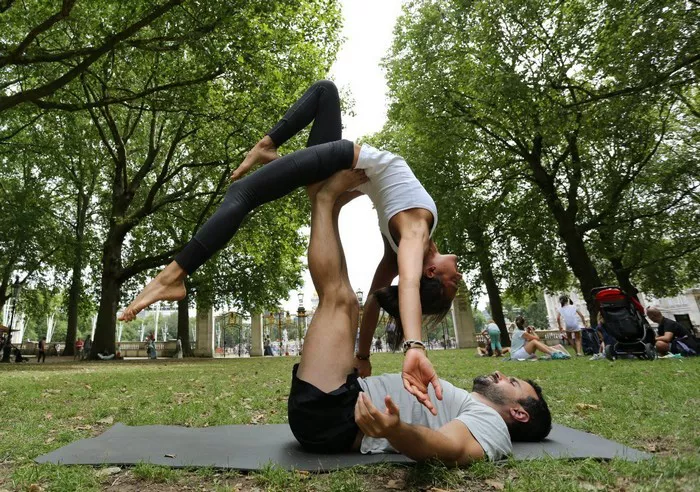Iyengar Yoga, developed by B.K.S. Iyengar, is a form of Hatha Yoga that places a strong emphasis on precision, alignment, and the use of props. Unlike some more fluid or dynamic styles of yoga, Iyengar Yoga focuses on the minutiae of each posture (asana), encouraging practitioners to delve deeply into the structure of the body and mind. While at first glance it may appear purely physical, this method holds profound spiritual underpinnings that are often overlooked.
Understanding the Roots of Iyengar Yoga
To comprehend whether Iyengar Yoga is spiritual, it is essential to trace its lineage and foundational principles. B.K.S. Iyengar was deeply rooted in the philosophy of Patanjali’s Yoga Sutras, an ancient text that lays out an eight-limbed path (Ashtanga) towards spiritual liberation. Iyengar interpreted these limbs not just as abstract concepts but as practical tools to integrate into daily life. His teachings, therefore, bridge the physical, mental, and spiritual realms.
The Eight Limbs of Yoga and Their Role in Iyengar Practice
1. Yama (Ethical Restraints)
Iyengar Yoga incorporates yamas such as non-violence (ahimsa) and truthfulness (satya) by promoting integrity in actions, speech, and thought. Practicing with awareness of these values elevates the physical discipline into a moral and spiritual exercise.
2. Niyama (Personal Observances)
Discipline, cleanliness, contentment, self-study, and surrender to a higher power are actively cultivated. For example, self-study (svadhyaya) is emphasized in every class as students are guided to observe their mental and physical responses.
3. Asana (Posture)
In Iyengar Yoga, asana is more than just bodily exercise. Each pose is held longer to facilitate introspection, stillness, and a meditative state, encouraging a union between the body and the mind.
4. Pranayama (Breath Control)
Breathwork is systematically introduced once a student attains stability in asana. Pranayama serves as a gateway to deeper states of awareness, often described as a spiritual experience by long-term practitioners.
5. Pratyahara (Withdrawal of the Senses)
As students become more focused, they naturally withdraw attention from external stimuli, turning inward. This inward gaze is the starting point for deeper meditative practices.
6. Dharana (Concentration)
Iyengar Yoga enhances concentration by demanding total focus on alignment, breath, and subtle bodily sensations.
7. Dhyana (Meditation)
Although not always practiced in the conventional seated form, meditation is intrinsic to Iyengar Yoga through mindful movement and breath awareness.
8. Samadhi (Union)
The ultimate goal of yoga, a state of blissful absorption, is subtly approached through the disciplined, integrative practices of Iyengar Yoga.
The Role of Props in the Spiritual Practice
Props such as blocks, straps, blankets, and chairs are not just physical aids; they enable access to postures that reveal deeper mental and emotional patterns. These tools support spiritual growth by allowing all practitioners, regardless of limitations, to experience a sense of balance and equanimity, central to spiritual advancement.
The Teacher-Student Relationship
Iyengar Yoga emphasizes the sacredness of the teacher-student relationship. Instructors are trained rigorously and follow a code of ethics that fosters trust, respect, and humility. This relationship mirrors the guru-disciple tradition, where spiritual wisdom is transmitted through direct guidance, experiential learning, and disciplined practice.
Mindfulness and Inner Awareness
Every Iyengar class is structured to cultivate mindfulness. Teachers continuously guide students to bring attention to their breath, alignment, and mental state. Over time, this develops a profound self-awareness that transcends the physical realm, touching upon spiritual self-inquiry.
Philosophical Teachings Integrated into Classes
It is not uncommon for Iyengar teachers to quote the Yoga Sutras or speak about yogic ethics during class. These teachings offer context and depth, reinforcing the idea that yoga is a way of life and not merely a form of exercise. Such philosophical integration aligns the practitioner with the spiritual essence of the discipline.
Iyengar Yoga and the Concept of the Self
Iyengar Yoga encourages exploration of the self at multiple levels. The body is used as a vehicle to access deeper layers of consciousness. Through consistent practice, students often report a shift from ego-centered awareness to a more expansive, connected state of being, which is a hallmark of spiritual awakening.
Silence and Stillness in Practice
A unique feature of Iyengar classes is the emphasis on silence and stillness. These are not just tools for concentration, but gateways to deeper internal states. Moments of silence allow practitioners to integrate physical experiences with mental clarity and spiritual insight.
Healing as a Spiritual Experience
Many students come to Iyengar Yoga for physical healing and stay for the mental and emotional transformation. The method’s therapeutic approach aligns with the yogic belief that health is not merely the absence of disease, but a state of harmony and spiritual equilibrium.
Is Iyengar Yoga a Religion?
Iyengar Yoga is not a religion, but it is deeply spiritual. It does not require adherence to any dogma or belief system. Instead, it offers a framework for self-exploration and inner growth, which individuals of any faith, or none at all, can engage with meaningfully. The spiritual aspect arises naturally from sincere, consistent practice.
Testimonials and Practitioner Experiences
Many long-term practitioners describe transformative experiences that go beyond physical benefits. These include increased compassion, emotional resilience, mental clarity, and a profound sense of peace. Such outcomes are often described in spiritual terms, further affirming the spiritual depth of the practice.
Key Takeaways: The Spiritual Dimensions of Iyengar Yoga
- Alignment is not just physical: It reflects mental and spiritual alignment.
- Breath is a bridge: Between body and spirit, anchoring awareness.
- Stillness reveals insight: The pauses in practice cultivate presence.
- Consistency leads to transformation: The spiritual aspect unfolds gradually.
Practical Tips for Embracing the Spiritual in Iyengar Yoga
- Approach your practice with intention: Begin each session with a moment of reflection or gratitude.
- Engage with yogic texts: Reading the Yoga Sutras or B.K.S. Iyengar’s writings can deepen your understanding.
- Maintain a practice journal: Documenting insights and changes fosters spiritual reflection.
- Attend workshops and retreats: Extended time in practice often unveils deeper layers.
- Cultivate silence: Before, during, and after practice, to integrate the experience.
Conclusion
Iyengar Yoga, though often perceived as a highly technical or physical style, is imbued with spiritual wisdom. It is a path of integration—of body, mind, and spirit—leading the practitioner from outer alignment to inner awareness. While it may not exhibit overtly religious rituals, its methodical approach fosters a deep, personal spiritual journey. For those seeking more than physical fitness, Iyengar Yoga offers a grounded yet profound pathway to self-realization.
Related Topics:












